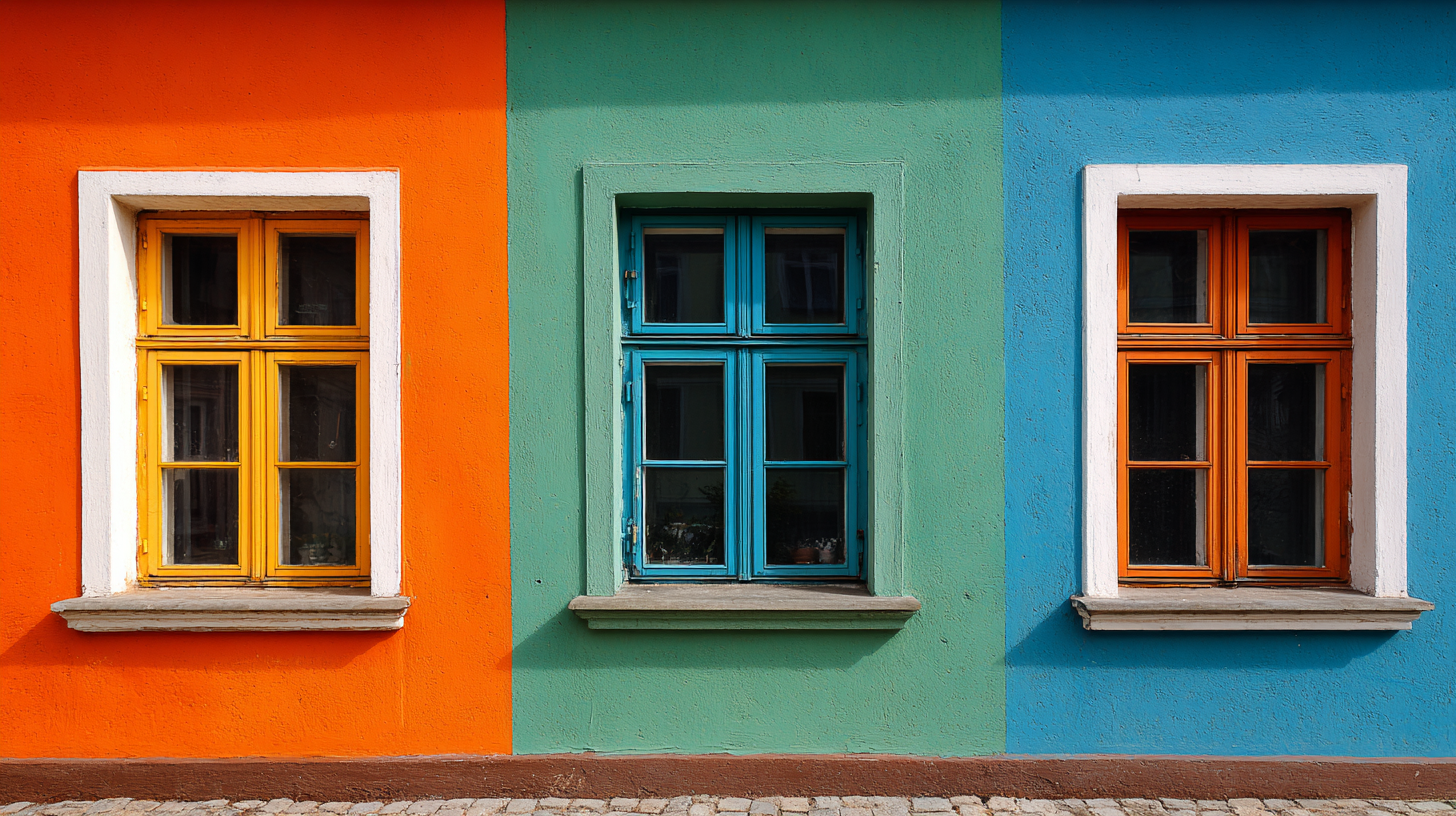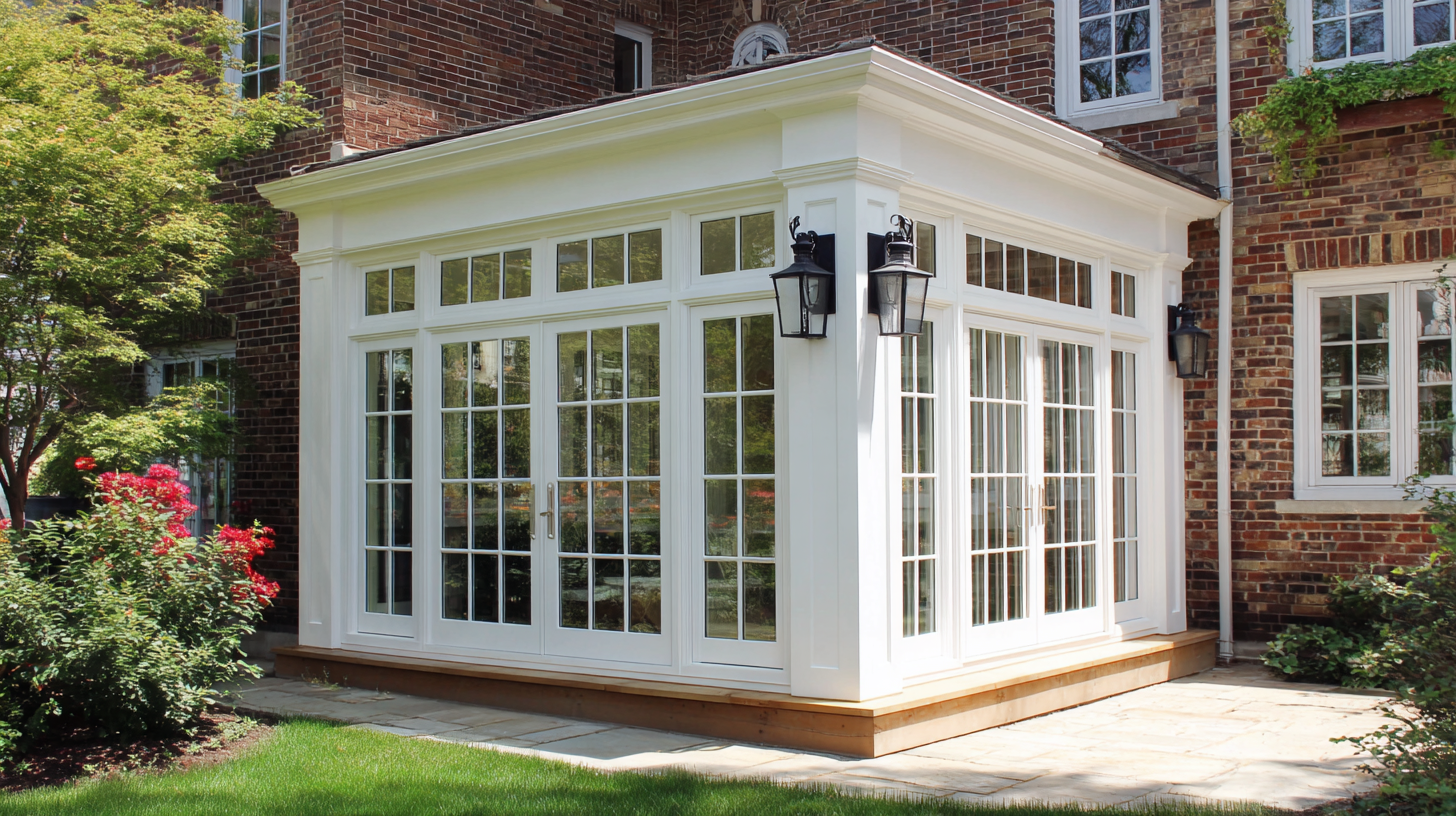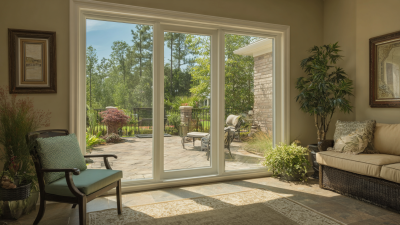Why Choosing the Right House Windows is Essential for Energy Efficiency
 When it comes to enhancing energy efficiency in homes, the choice of house windows plays a crucial role that cannot be overlooked. Research from the U.S. Department of Energy shows that approximately 25-30% of a home's heating and cooling energy is lost through its windows. This significant figure highlights the necessity of selecting the right type of windows, not only for comfort but also for cost-saving benefits over time.
When it comes to enhancing energy efficiency in homes, the choice of house windows plays a crucial role that cannot be overlooked. Research from the U.S. Department of Energy shows that approximately 25-30% of a home's heating and cooling energy is lost through its windows. This significant figure highlights the necessity of selecting the right type of windows, not only for comfort but also for cost-saving benefits over time.
Moreover, advancements in window technology, such as double glazing and low-emissivity (low-E) coatings, can drastically improve insulation and reduce energy consumption. According to the Lawrence Berkeley National Laboratory, upgrading to energy-efficient windows can save homeowners up to 15% on their energy bills annually. Therefore, making informed decisions regarding house windows can lead to substantial reductions in energy costs, contributing to both financial savings and reduced environmental impact. In this context, understanding the nuances of different window options becomes essential for homeowners striving for a more efficient and sustainable living space.
Understanding the Impact of Windows on Home Energy Consumption
Windows play a crucial role in determining a home's overall energy efficiency. They act as a barrier against external elements, impacting how much heat enters or escapes a house. High-quality windows with advanced insulation properties can significantly reduce energy consumption, ensuring that heating and cooling systems work more efficiently. Poorly insulated windows can lead to significant energy loss, causing homeowners to rely on their HVAC systems more frequently, which in turn incurs higher utility bills.

Moreover, the design and material of windows influence their energy performance. Double or triple-pane windows, filled with argon or krypton gas, offer better insulation than single-pane options. Additionally, low-emissivity (low-E) coatings can reflect infrared light, keeping homes cooler in the summer and warmer in the winter. Homeowners who prioritize energy-efficient windows not only lower their carbon footprint but also enhance their comfort levels, making informed choices essential for long-term savings and environmental benefits.
Types of Energy-Efficient Windows to Consider for Your Home
Choosing the right windows for your home is crucial for maximizing energy efficiency. Energy-efficient windows can significantly reduce heating and cooling costs, making them a worthwhile investment. According to recent studies, homes equipped with Energy Star certified windows can save homeowners an average of $100 to $500 annually on energy bills, depending on the climate and current window efficiency. Double-glazed windows, which feature two layers of glass separated by a space filled with argon gas, are particularly effective in minimizing heat loss.
When considering window options, look for those with low U-factors and low solar heat gain coefficients (SHGC). These ratings indicate better insulation and reduced heat transfer, respectively. Additionally, homeowners should be aware of the potential for energy tax credits; in 2025, credits may cover up to 30% of the cost for qualifying energy-efficient improvements, including window replacements.
**Tips:**
- Always check for the Energy Star label to ensure your windows meet efficiency standards.
- Consider investing in double glazing, which not only enhances energy efficiency but also provides sound insulation.
- Evaluate your existing window frames; sometimes, simply upgrading to more efficient glazing can suffice without a complete replacement.
Energy Efficiency of Different Window Types
This chart depicts the energy efficiency ratings of various types of windows commonly used in homes. The ratings indicate their effectiveness in reducing energy consumption, with lower U-values representing better insulation.
Key Features to Look for in Energy-Efficient Window Designs
Choosing energy-efficient windows is crucial for enhancing a home's energy performance. When evaluating window designs, several key features stand out. First, the window's frame material significantly impacts insulation properties. According to the Energy Efficiency Guide published by the U.S. Department of Energy, materials like vinyl and fiberglass offer superior thermal insulation compared to traditional aluminum frames, leading to potential energy savings of up to 30% on heating and cooling costs.
Another vital consideration is the type of glazing used. Double or triple-pane glass filled with argon or krypton gas creates a barrier that reduces heat transfer. The National Fenestration Rating Council (NFRC) reports that insulated windows can reduce the amount of energy needed for heating and cooling by as much as 25% to 50%. Additionally, Low-E (low-emissivity) coatings applied to the glass can help minimize heat loss during winter months and reduce heat gain in summer, further optimizing energy efficiency.
Lastly, proper installation is indispensable to prevent air leakage, which is responsible for up to 30% of a home's energy loss. A study by the Lawrence Berkeley National Laboratory highlights that well-sealed windows can achieve energy savings of up to 12% on overall utilities. By prioritizing these key features—frame material, glazing options, and installation quality—homeowners can make informed choices that enhance energy efficiency and contribute to reduced utility bills.
Why Choosing the Right House Windows is Essential for Energy Efficiency - Key Features to Look for in Energy-Efficient Window Designs
| Feature | Description | Energy Efficiency Benefit |
|---|---|---|
| Low-E Glass | Glass coated with a transparent layer that reflects heat and UV rays. | Reduces energy costs by minimizing heat transfer. |
| Double or Triple Glazing | Windows with two or three layers of glass that provide better insulation. | Improves thermal efficiency and reduces noise. |
| Gas Fills | Inert gases like argon or krypton are used between glass panes. | Enhances insulation beyond standard air-filled windows. |
| Frame Material | Materials like vinyl, fiberglass, or wood that provide varying insulation levels. | Affects thermal performance and durability. |
| Solar Heat Gain Coefficient (SHGC) | Measures how much solar heat is admitted through the window. | Helps in selecting windows that suit climate and orientation, balancing heating and cooling needs. |
| U-Factor | Indicates the rate of heat transfer; lower values mean better insulation. | Critical for energy efficiency ratings and comfort levels. |
How Window Installation Techniques Affect Energy Efficiency
When considering energy efficiency in homes, the impact of window installation techniques often takes a backseat to the type of windows themselves. However, proper installation is crucial for maximizing the thermal performance of windows. According to the U.S. Department of Energy, 25-30% of a home's heating and cooling energy is lost through inefficient windows. Therefore, ensuring windows are installed with precision can significantly mitigate such losses.
One of the key factors in window installation is the sealing process. Using high-quality, energy-efficient caulk and weatherstripping can prevent air leaks that lead to drafts. In fact, a report by the National Renewable Energy Laboratory indicates that well-sealed windows can improve overall energy efficiency by up to 15%. Homeowners should ensure that window frames are level and plumb, which helps maintain proper alignment and seal, further enhancing performance.
Tips: Always opt for low-emissivity (Low-E) glass when replacing windows, as it can significantly reduce heat transmission. Additionally, consider hiring certified professionals who are knowledgeable about energy-efficient installation practices to ensure that your windows perform optimally in the long run. Proper installation not only improves energy efficiency but also contributes to enhanced comfort and reduced utility bills.
The Long-Term Benefits of Investing in Quality Windows for Savings
Investing in high-quality windows can significantly enhance a home's energy efficiency, leading to substantial long-term savings. Properly chosen windows improve insulation, reducing the need for excessive heating or cooling. This not only leads to lower utility bills but also contributes to a reduced carbon footprint. Homeowners who prioritize window quality are essentially making a commitment to long-term energy savings and environmental responsibility.
As the market shifts toward sustainable living and energy efficiency, the value of quality windows becomes increasingly apparent. Much like the recent conversations in investment circles about identifying long-term value opportunities, selecting the right windows is a strategic investment. It promises not only immediate benefits through savings on energy costs but also enhances property value over time. By approaching window selection with a long-term mindset, homeowners can enjoy continued advantages, much like investors focusing on aggregate growth in a resilient market.

Related Posts
-

Innovation in Home Windows Industry at 2025 China Import and Export Fair
-

Exploring Window Replacements Trends at the 138th Canton Fair China 2025
-

Enhancing Home Energy Efficiency through Expert Window and Door Replacement Strategies
-

Maximizing Energy Efficiency: The Impact of Quality Windows and Doors on Home Insulation
-

The Ultimate Guide to Choosing and Installing Your Perfect Patio Door
-

Essential Tips for a Smooth Patio Door Installation Experience: Expert Insights Revealed
